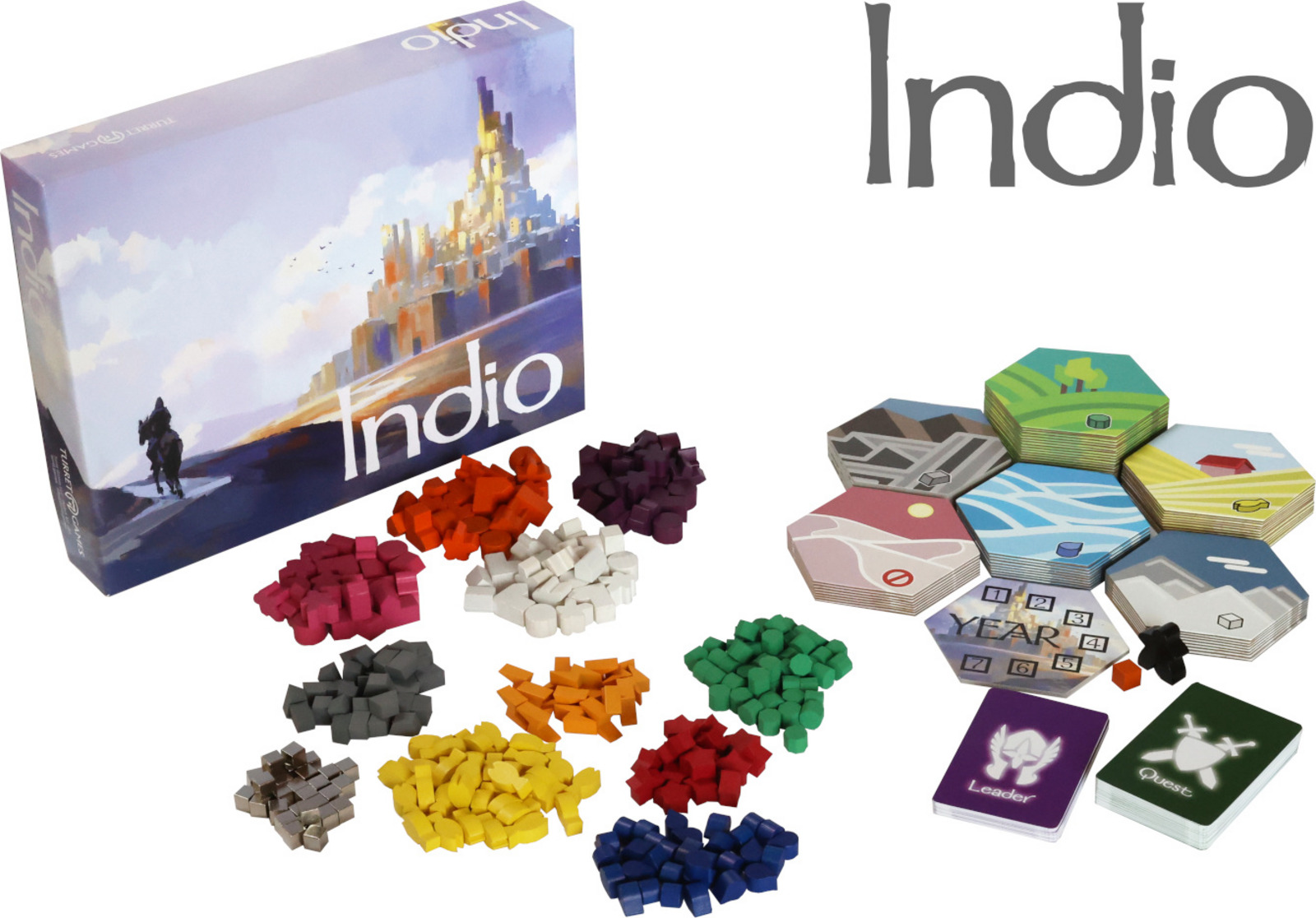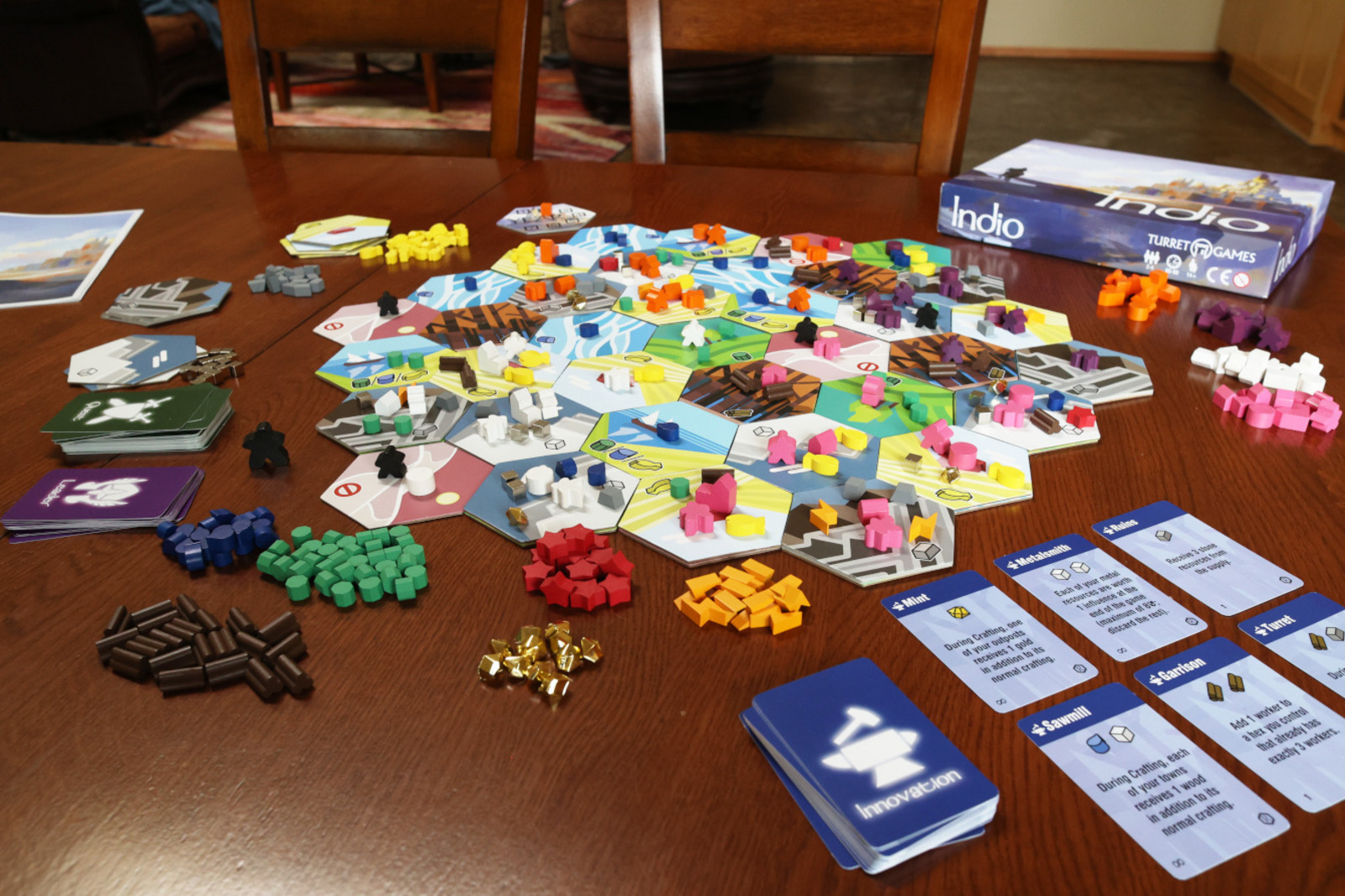Two and a half years ago, I started working on my first serious board game. I called it Hexteria, since the board was made of hexagonal tiles, and it had a catchy ring to it. Over the course of those two and a half years, I played it over and over with friends and family– probably fifty or sixty times in all– tweaking it each time. Those tweaks grew smaller and smaller, until last summer when I decided it was finished. (With projects like this, I feel like I could tweak it forever, so at some point I just had to make the call.)
I considered what to do next. I could have my single copy of the game, and pull it out now and again at game nights. Or I could take another step and do some marketing, with the goal of putting it out to the world. The latter path seemed more difficult, since I know virtually nothing about marketing, and wasn’t sure anyone would actually want to pay money for this creation of mine. And to be honest, the fun of designing a game was in designing and playing it; making it commercially available didn’t feel like it would give me any more satisfaction. Sure, it would be kind of cool if a bunch of strangers saw it online and decided to drop some money on it, but it wouldn’t really add to what I’d accomplished.
So it sat on the shelf for a while. Then there was a moment– I can’t quite identify it– when I decided I should take that last step after all. Without attempting to market it, the journey felt like a book that was missing the last chapter. I went to work. The first problem: “Hexteria” had been claimed a few months earlier by a company who’d built a little puzzle app for kids. They had claim to the trademark, and it didn’t make sense to fight for naming rights. I had to come up with something new. As it happens, on our road trip last summer, we passed the city of Indio, California. “Indio” seemed like a cool name, and a quick online search proved that it wasn’t really used for anything but that city. And no one would confuse a city with a board game, so that became the new name.
I worked for a long time on the design elements of the game. I liked the artwork for the board tiles, but I needed more. A game box. The rulebook. Promotional graphics. I’m awful at graphic design, so I dove into the internet and found some artwork I liked. I redesigned the cards, rewrote the rulebook, built a web site, listed the game on several well-known web sites, and finally felt like things were ready to go live. I created a Kickstarter page and built the explanation and graphics. I did a lot of work on the finances of the game, figuring out how to manufacture it as inexpensively as possible while still providing a “premium” experience with the game components. In the end, I was able to force the price down to $75 a copy. It felt a little high, but there was nothing I could do about it unless I wanted to redo the entire game and source the parts in China (an adventure in itself). I listed it at that price, which means I won’t even make money on the enterprise. If the Kickstarter campaign succeeds, I’ll barely break even… in fact, I’ll likely lose a little bit of money. But that’s okay if I can get it into the hands of a hundred people.


This morning I clicked the big “Ready to Launch” button on the Kickstarter page, and the campaign went live. Indio is out there, ready for people to buy it. I texted some friends who like board games, and told them about it. To my surprise, most of them signed up and bought a copy. (If any of you are reading this, I’m really grateful!)
Now it’s a waiting game. The campaign will run for three weeks, and at the end of that time, if there are roughly a hundred people signed up to buy it, I’ll be working on manufacturing and fulfillment. If not, I’ll know I wrote the final chapter in the book and can close it. Either way, I’ll be satisfied.
And then it’ll be time to work on the next game!
